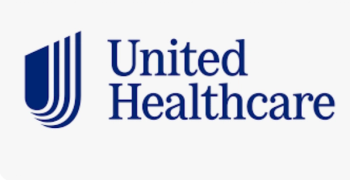
Community-Based Care Programs Fill Gaps in Traditional Health Services
Integrating programs that address social risk factors will improve health.
For some patients, it’s a struggle to get medications, a ride to appointments, or to make a healthy meal. Unfortunately, many of these problems are beyond the reach of the traditional healthcare model.
The American healthcare system is facing an increasingly ill and elderly population. Chronic conditions plague patients across the continuum, and value-based care models demand better outcomes and lower costs. To offset this less-than-ideal situation, more healthcare systems are looking outside of traditional channels for help. Numerous studies highlight patient reports of increased satisfaction from community-health programs and clinics, and there are arguments for cost avoidance-if not direct cost savings-from these programs.
Georges C. Benjamin, MD, executive director of the American Public Health Association, says community-based care services may be the new buzz, but the premise is not new.
“The public health community has a long history of utilizing people from nurses to people with lay health skills to reach out beyond the office practice to help people improve their health,” Benjamin says. “What makes them valuable is they-particularly the lay community health workers-know the community because they generally come from that community. They have a cultural competency that the people that work in a physician practice may or may not have.”
Community health workers
Community health workers not only help manage costly and dangerous chronic conditions, but they also identify new issues that might not arise during a typical office visit.
“They bring information about the individuals that often is not picked up during the office visit, particularly when dealing with patients that may be underserved and have a multitude of complex social problems that have to be addressed,” Benjamin says. “It brings that information into the clinical discussion and community health workers help reach out to engage patients where they live to help them navigate a complex and disjointed health system. In many ways, they serve a support function, a social service function and-if they have the know-how-a clinical function.”
From helping individuals understand their medication regimen, to helping them prepare healthy foods or make it to their doctor’s appointments, community health workers fill an increasingly important role-particularly as value-based care becomes a priority.
“It’s about trying to get rid of the inefficiencies and deal with the complexities of the care for these patients, and to narrow the number of barriers they have to get the care they need. It’s important in order to maintain their health and offset costs,” Benjamin says.
“There’s an enormous cost avoidance opportunity there.”
Proof in the research
While anecdotal evidence on the benefit of community-based healthcare abounds, it can be difficult to generate hard data, because many of these programs simply don’t have the resources to track their progress and because there are so many benefits beyond measurable outcomes.
However, the available research does speak to the efficacy of community-based healthcare programs.
“Community-based programs are on the rise both because we have a growing body of research demonstrating that social risk factors and community context affect health as much as-or more than-clinical risk factors, and because the ACA is putting healthcare payers and providers increasingly at risk for population health outcomes,” says Melinda Buntin, PhD, professor and chair of the Vanderbilt Department of Health Policy.
Buntin and her colleagues researched the evolution of community-based care for a report in Health Affairs, and found while most programs don’t have the resources to evaluate their impact, incremental changes are being made and the healthcare industry is noticing.
“There is some evidence that community-based health improvement programs produce improved population health outcomes,” says Carrie Fry, a doctoral candidate in Health Policy and Statistics at Harvard University and coauthor of the report. “As such, many payers are currently integrating these and other social service programs into their portfolio, particularly in Medicaid managed care, presumably because they believe that addressing social risk factors will improve health outcomes and offset the expenses of these programs. Additionally, the per-person costs of community-based health programs are often lower than healthcare interventions that produce similar health outcomes.”
The study used public data on community-based health improvement programs to assess the relationship between community-based health programs and county-level health outcomes. The research team found that while measured outcomes showed little change, there were larger gains in behavior changes in the communities studied.
According to the study, the number of community health programs grew during the study period from 14 programs serving 319 counties in 2007 to 52 programs serving 396 counties by 2012. Counties with health improvement programs had larger populations of young adults and larger populations of individuals who were unemployed or living in poverty.
The study reveals a mere 0.06% mean reduction in individuals reporting poor or fair health after the implementation of a community health program, and a mean reduction of less than 0.15% in individuals who were overweight or obese after program implementation.
While these figures may not be statistically significant, the study found that targeted community health programs were a bit more successful in changing behaviors, particularly those targeting smoking and obesity. The study also highlights the fact that changes take time in healthcare, and small improvements can yield larger results as time goes on.
“Improving population-level health outcomes is difficult, and it takes time to ‘move the needle’ on health outcomes,” the report notes.
The role of community-based healthcare services will only continue to grow as the traditional healthcare model struggles to care for the increasingly aging, sick population in the U.S., according to Fry.
“As healthcare organizations are increasingly at risk for population health outcomes, community health programs will play a bigger role in the ‘traditional’ healthcare model. We see these organizations are now being integrated into value-based payment contracts, such as accountable care organizations,” says Fry. “In these arrangements, community-based programs provide services that healthcare organizations typically do not provide-housing and food assistance-as well as more healthcare-oriented services such as medication adherence and outreach for high-risk patients. The integration of community-based health improvement programs with traditional healthcare organizations is likely going to continue being the trend.”
The state of community-based care
The transition to value-based care will also play a role in the continued utilization of community-based services, she says.
“As the healthcare system continues to move toward value-based payment, healthcare and payer organizations are going to have to address these social risk factors in order to meet population health goals set for these organizations. The trend toward partnering and/or integrating with community-based health promotion programs and social service agencies is one way to address these factors,” Fry says. “Partnering and integrating is more likely to produce improved health outcomes than keeping traditional healthcare organizations and these programs separate.”
The cost of community-based care services may seem overwhelming and not altogether justified to some payers or networks, but Benjamin says the cost benefits come more in cost avoidance than direct savings.
“Everything has a cost, and even if something doesn’t always save money, it may improve quality of life, and you can often offset upstream health costs,” he says. “While the cost savings appear to be elusive, if you really do the cost accounting, you will find it. Sometimes, the savings is in the wrong pocket-it might not be in your pocket, but it’s clearly in the system.”
Some organizations are recognizing the value of these programs, though, and investing in local services.
Nicole Cooper, DrPH, MPH, senior director of social responsibility at UnitedHealthcare, says community health workers are an important part of the health continuum-so much so that United Healthcare funded several multi-million dollar grants to fund community health services in several states. These grants include $1.5 million to hire 15 community health workers at the Daughters of Charity Health Center in New Orleans and $1.5 million to hire 15 community health workers at the Jordan Valley Healthcare Center in Missouri.
For Daughters of Charity, these were the first community health workers they were able to hire, and the grant fully funded all 15 new employees, Cooper says. At Jordan Valley, the health system had three community health workers already, but the grant supports an additional 15 workers. United Healthcare has also supported food banks and pantries, mobile dental clinics, immunization programs, transportation programs, and more across its networks, recognizing the value of supporting members outside of clinical care.
“We employ many community health workers in almost every market and community we serve, Cooper says, adding that facilities that have increased community health programs have reported improvements in many areas. “They’ve shared stories about improved relationships and trust, an increase in visits and integration of services, improved efficiency across the levels of engagement, and they are starting to see improved quality scores.”
Cooper says UnitedHealthcare has recognized that patient care isn’t just about clinical care, and there are a number of ways to improve outcomes while lowering health costs.
“UnitedHealthcare by and large has made a commitment to help redefine access for communities that are particularly underserved or underinsured. We cannot just focus on clinical care. We also need to have a focus on the many areas that have an impact on health and quality of life, like food, housing, and transportation,” Cooper says. “We’re actively pursuing making investments in organizations that serve on the front lines and have chosen to fund community healthcare. We know community health workers are a powerful tool to help communities.”
While there is room for more data collection and evidence on outcomes and cost savings, Benjamin says the benefit of community-based services is abundantly clear already.
“The train has left the station on this and the truth of the matter is that people aren’t going to continue to pay for volume-based care anymore. They want to pay for outcomes,” Benjamin says. “We can influence outcomes through the system-wide things we do, and we’re going to have to be more assertive in this space.”
Rachael Zimlich, RN, is a writer in Columbia Station, Ohio.
Newsletter
Get the latest industry news, event updates, and more from Managed healthcare Executive.

















































